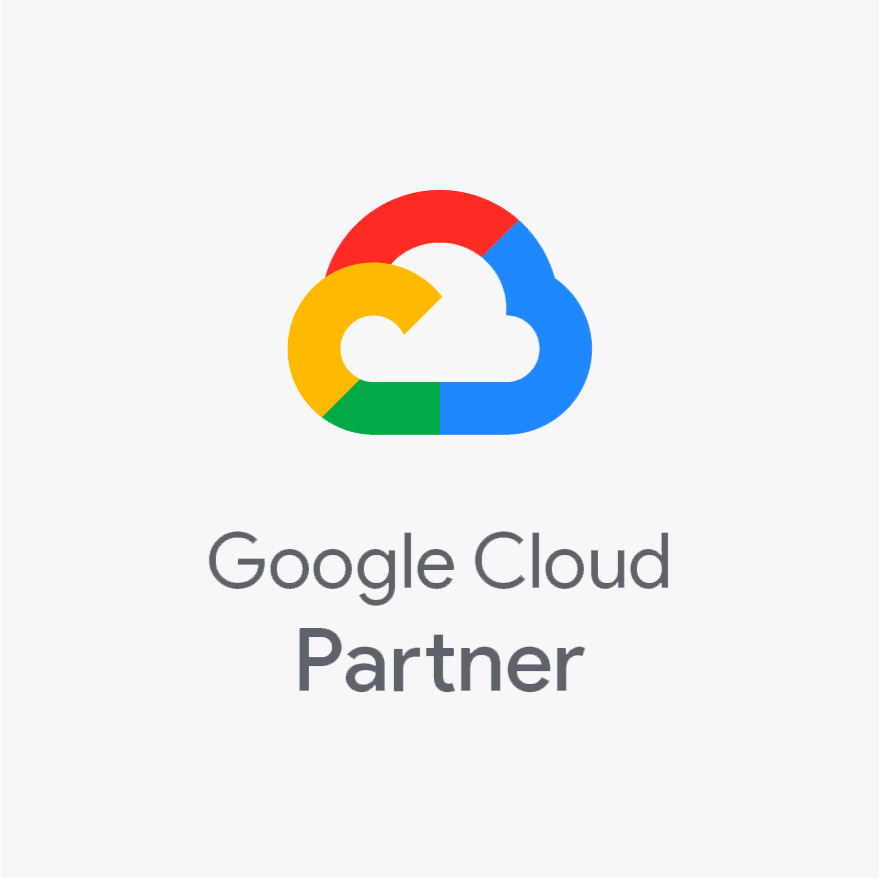Google Cloud Platform, migrate your infrastructure to GCP
Google Cloud Platform is one of the leading cloud providers in the market. GCP combines Google Cloud services and offers solutions for storage, security, networking, big data, machine learning, and application development. Padok supports your teams in migrating your infrastructure to GCP.
Migrate my infrastructure
What is Google Cloud Platform?
Cloud computing involves accessing computing resources, data, and tools remotely, usually stored in data centers outside the company. Three major players in cloud computing share the largest market share: Amazon Web Services (AWS), Azure, and Google Cloud Platform (GCP), which is presented here.

Google Cloud is one of the major players in this field. Google brings together various cloud services for storage, security, networking, machine learning, and application development. To save time on infrastructure management, several classic services can be used, such as:
- Containers: Google Kubernetes Engine (GKE) for container orchestration;
- Storage: Cloud Storage for file storage;
- Security: Google Cloud IAM for managing human and machine rights;
- Database: Cloud SQL for relational databases.
Advantages of GCP
GCP is known for having a more intuitive and developer-friendly interface than other cloud service providers. For instance, the home dashboard is customizable based on your needs, and all resources are easily visible regardless of their region. Therefore, the GCP console is easier to learn for beginners compared to other providers.
Furthermore, basic system concepts, like networking or monitoring through StackDriver, are simplified and come with default configurations that are secure and tailored to common use cases. This enhances adoption and productivity among your developers, especially for those who are just starting.
Lastly, GKE (Google Kubernetes Engine) offers better integration with Kubernetes's container orchestration tool. This is achieved by integrating the latest Kubernetes advancements as they are released. For instance, GKE is currently the only managed Kubernetes service that supports the use of taints, a concept that allows the isolation of certain APIs on specific server types.
With cloud computing, you eliminate the maintenance costs of your servers and avoid wasting unused resources.
Google Cloud Platform is often considered the most cost-effective solution. GCP operates on a pay-as-you-go model, where your resource consumption is calculated to the minute. There are no commitments or termination fees, giving you the freedom to test services. GCP also offers discounts of up to 30% on the most used workloads, helping to lower the bill.
The billing dashboard provides better cost visibility (by project, resource type, etc.). This is crucial if you're looking to implement FinOps practices in your company.
This advantage applies to all cloud computing platforms as they offer great flexibility for businesses. The application is accessible anywhere, anytime, and allows you to adjust capacity based on demand through scaling.
The autoscaling service detects traffic spikes by monitoring metrics such as CPU, RAM, or any specific metrics you implement. When a traffic spike is identified, the autoscaler controller starts servers with your application and directs a portion of the traffic to these servers. This ensures your application remains available without slowdowns for your end users. Once the traffic spike subsides, the observed metrics decrease and the autoscaler controller removes the previously added servers to return to normal operation.
Why choose Padok
-
High-level expertise in GCP
-
Custom-built infrastructure
-
Support for getting started with GCP
-
Cloud migration in 8 weeks

"We had an entire legacy system to migrate to GCP. Their methodology and the technical skills of the teams allowed us to migrate in record time!"

Alexis Pibrac
Tech Lead
"Thanks to Padok, our teams managed to build a new scalable infrastructure on GCP in less than a quarter without disrupting other projects."

Pierre Couzy
Chief Technology Officer

"Our clients now benefit from features that are delivered more quickly and with higher quality."

Jean-Michel Blanc
CTO
"Our infrastructure is more robust, and the team is highly involved."

Damien Leroux
CTO
"The Padok Cloud expert was highly knowledgeable technically, and the organization was super efficient! They produced an easily actionable strategy for our team."

Bastien Duret
VP Engineering
"The team is highly technically skilled, and the volume of work accomplished is impressive.”

Minh-Duc Hua
CTO
The GCP community
Google Cloud has a large community of experts who contribute to open-source projects like Kubernetes, TensorFlow, Apache Beam, Spinnaker, to name a few. The community also shares numerous tutorials and offers discussion forums (Stack Overflow and Server Fault). Many meetups are organized around the world each year by community experts. If you need assistance with the console or Google Cloud services, you'll quickly find people to help you due to the strong support network buiKubernetes's container orchestration tools.
Our Google Cloud offers
We accompany you throughout your journey to GCP's cloud. Whether you want to audit, migrate, or secure your infrastructure, our cloud experts are here to assist you.
Request a personalized quoteCloud migration
Do you want to migrate your infrastructure to the cloud? Wait no more; our DevOps and Cloud experts join your teams to prepare your infrastructure and establish a migration plan. We guide you through the entire migration process to GCP and provide the necessary training for your teams.
Cloud audit
Do you want an external assessment of your GCP or on-premise infrastructure to determine what to migrate? Our experts audit your infrastructure to provide concrete recommendations for improving performance.
Cloud run and optimization
Is your deployment process too complex and time-consuming? Our DevOps and Cloud experts assist you in optimizing your architecture using automation tools. We also help fix production bugs or security vulnerabilities and propose sustainable actions for their resolution.
Migrating to Google Cloud of Ada
Migrating to Google Cloud: AdaDescr: Ada offers a service that allows users to rent an electric vehicle in just 1 minute from a fleet of 500 cars stationed in Paris. Padok assisted Ada in migrating the infrastructure of its mobile application to the Google Cloud Platform (GCP).
View all our case studies-
Project duration
5 weeks -
Key highlights
- Load management through precise adaptation to traffic spikes
- Decomposition of Node.js monolith code into microservices
- Complete overhaul of the file storage system to ensure the security of official documents
- Weekly production deployment without downtime
-
Results
- Application stability exceeds 99.99%
- Developers were able to break down the monolith into 3 micro-services
- Production deployment time reduced by 4
- Development experience greatly improved: a developer can test a change in 2 seconds, compared to 30 previously



